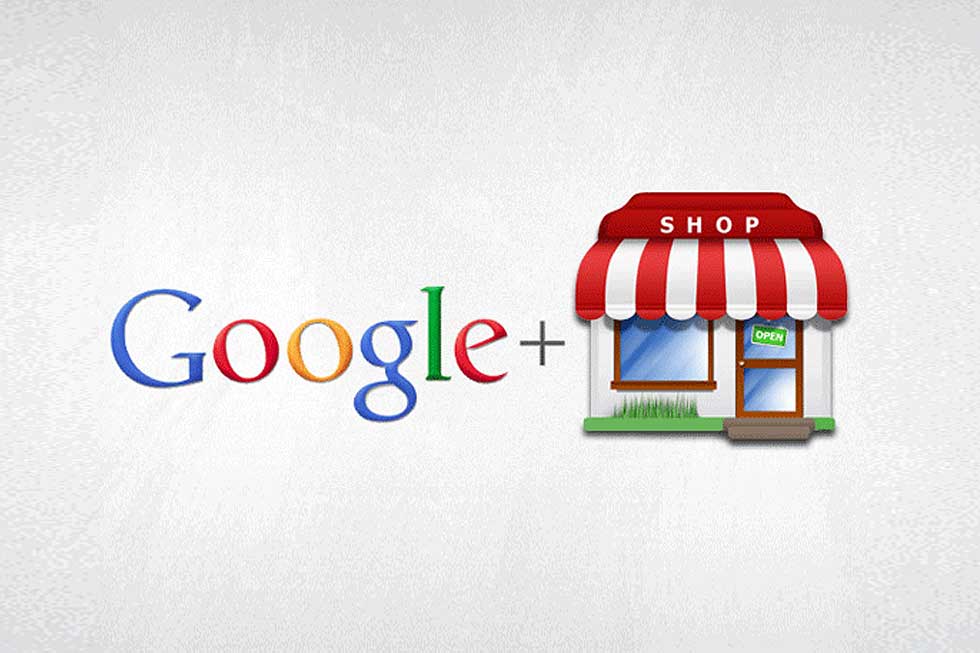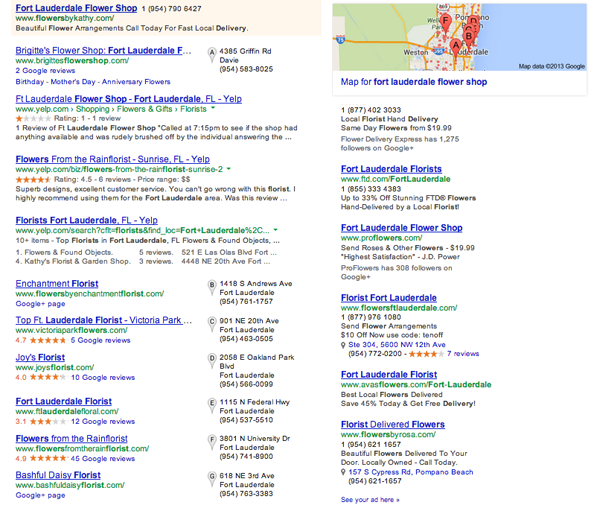
If your business gets some or all of its customers or clients locally and you want to do business online, Local SEO can work wonders for lead generation and improving your bottom line.
What is Local SEO, and why should you do it? Local search is the act of making your website rank highly for geographically-related keywords, as well as giving users easy access to information like your phone number, address, hours of operation, menus, reviews, social media channels and articles.
The two most common ways that search engines like Google return geographically-based results are:
1. A user includes a location within their search parameters (search for ‘fort lauderdale flower shop’).
2. A user is in a location and performs a search (user is in Ft. Lauderdale, FL and searches for ‘flower shop’).
While all of this seems daunting, the good news is there are some easy and cost effective steps you can take today to optimize your site for Local Search.
Let’s get started.
10 STEPS FOR LOCAL SEARCH ENGINE OPTIMIZATION
1. Local Keyword & Market Research
Before you attempt to rank for geographically-based search queries, you should spend some time doing keyword research to determine how users in your area are most inclined to search. If you own a flower shop, is search volume highest for the term ‘flower shop’ or ‘florist’? Do users typically key in your location first (‘fort lauderdale florist’) or last (‘florist fort lauderdale’). While search engines are getting more intelligent and typically account for nuances in search behavior, you can still learn a lot from upfront research.
It’s also important to do some market research to determine 1) who your local competitors are and 2) what they are doing right and wrong. Make a list of your top competitors and find out how well optimized they are for local search, if they are active on social media, whether or not they are running local ad campaigns, etc.
2. Location-based Onsite Elements
First things first. It’s critical to follow best practices and give Google the information it’s looking for when it determines how to rank web pages. Location-specific meta tags, keywords, body text, anchor text and addresses in the footer, will create relevance for search queries. These basic elements should be a part of any website build.
3. Schema.org Implementation
Schema Markup uses “microdata” to strengthen the geographic signals your websites sends to major search engines. Schema.org has partnered with Google, Bing and Yahoo to facilitate common code snippets that can be placed in your html code, which makes NAP info (name, address, phone number) hours of operation, prices, testimonials, reviews, and even menus appear uniformly in search results.
4. Google Places
Claim your Google Places directory listing. It takes just 5 minutes and will probably be the easiest (free) method of attracting new customers. Below are some statistics to convince you of the need to do this immediately.
– 43% of all Google searches are local or location based
– Over 50% of mobile searches are local or location based
Without claiming a listing, your business can not show up in Google’s infamous “7 pack” (the seven top-of-page-1 results that are triggered by search queries for local businesses). This is the holy grail of local SEO, and it’s paramount that you do everything possible to shoot for inclusion in the 7 pack.
In the below example, a search for ‘fort lauderdale flower shop’ returned a blended mix of organic results and local results. Notice that the Google 7-pack (results marked with letters A-G) is broken up by three organic results (in between A and B). Once upon a time, Google displayed the 7-pack results together, but then migrated to an integrated approach which mixes local and organic results.

5. Unify Your Business Directory Listings
If you’re a business that has changed locations multiple times within the same town or city, you may have noticed that your vital business information, such as address and phone number, might be different depending on the directory. For example, YellowPages.com may list your most current address, while City Search still shows a previous one.
The most effective way to unify your business information across the most popular online directories, is through a service called Yext. This service has partnered with over 50 directory sites and allows customers to push their correct business info to all of them in one shot. No more confused customers calling the wrong number or showing up at the wrong physical location!
6. Social Media
Social Media Marketing is a very effective way to reach an audience based on a set of demographics that you customize. Looking to attain Facebook followers of a particular age, sex or location? How about based on their interests?
Once you’ve established your target audience, you can promote your brand and strike up conversations with consumers who show interest. Facebook allows business owners to entice their audience with things like sales, promotions and contests. Keeping your fans engaged will ensure they stay on your radar, which gives you a better chance at converting them from a fan to a paying customer.
7. Testimonials and Reviews
It’s proven that 75% of customers trust online reviews just as much as word of mouth. Developing a strategy to attain positive customer or client testimonials and reviews is paramount to building trust with those not familiar with your business. Example: if you’re a dentist, allow patients to leave Yelp reviews or testimonials on an iPad before leaving the office.
There are a variety of techniques for enticing your customers to leave positive feedback. Email marketing, for example, is an easy and hassle-free way to ask customers to provide feedback on their experience with your services.
8. Build Citations
In order to build trust with major search engines, your business address, contact information and a link to your website should appear on as many sites and online directories as possible.
Given the large volume of options, start with the below most popular and build from there.
Search Engines
Social
· Tumblr
· Digg
Other Local Directories You May Want to Consider
· Yelp
· Nokia
To locate additional local directories, simply perform a Google search. For example, ‘Fort Lauderdale Business List’, ‘Fort Lauderdale Directory’ and ‘Fort Lauderdale Guide’ should return a nice list of sites for consideration. Additionally, you can google your top 5 or 10 top competitors to see where they have listed themselves. Click through to pages 2, 3, 4, etc. of a search query for a more in-depth view of how they are handling their own business listings. You never know what insightful findings will be uncovered, so don’t be afraid to dig deep.
9. Locally Targeting Ad Campaigns
Google Pay-per-Click advertising is fastest and most cost effective form of search advertising. An effective PPC campaign can augment your SEO expenditure, and provide a low-risk way to drive immediate traffic, test ad copy and monitor what works and what doesn’t. Organic search can take 4-6 months to show return on investment, while PPC can potentially pay off minutes after turning it on.
10. Separate Landing Pages for Each Location
Being that Google ranks web pages and not websites, it’s critical to develop separate pages for each of your locations. By doing this, your title tags and on-page information can create relevance to search queries related to the location the page is intended for.
Let`s Get
In Touch
Contact us today for a free consultation
and cost estimate for
your project.
We work with companies in all
industries, big or small.
Give Us a Call: 786-529-6039
Services
©2024 FUZE DIGITAL INC. Ignite Your Brand™ | privacy





